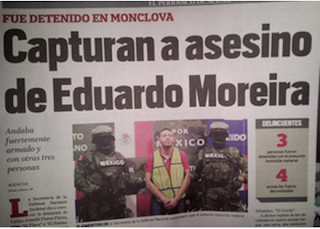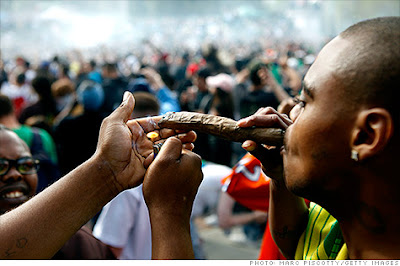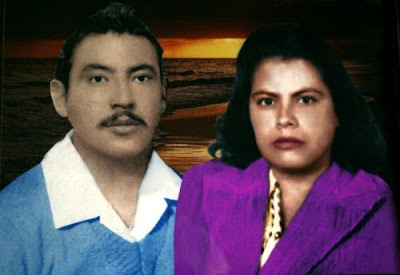Borderland Beat
San Antonio Spurs Owner purchases a Zeta Cartel Quarter Horse for a Million Dollars.
last we heard
![]() The horses were seized in June at an Oklahoma ranch run by José Treviño Morales, an older brother of one of the world’s most dangerous drug traffickers, Miguel Ángel Treviño Morales, Z-40 leader of Mexico’s Los Zetas drug cartel. The Treviño brothers established a prominent organization in the United States that bought, trained, bred and raced quarter horses, Tremor Enterprises, which allowed them to launder millions of dollars in drug money, the authorities said. The horses, bred from champion lineage, won some of the industry’s biggest races.
The horses were seized in June at an Oklahoma ranch run by José Treviño Morales, an older brother of one of the world’s most dangerous drug traffickers, Miguel Ángel Treviño Morales, Z-40 leader of Mexico’s Los Zetas drug cartel. The Treviño brothers established a prominent organization in the United States that bought, trained, bred and raced quarter horses, Tremor Enterprises, which allowed them to launder millions of dollars in drug money, the authorities said. The horses, bred from champion lineage, won some of the industry’s biggest races.
![]() Because of the health issues and other concerns, the judge in Texas has agreed to let the federal government sell all of the more than 450 horses linked to the drug cartel. About 380 of the horses are at the Lexington ranch.
Because of the health issues and other concerns, the judge in Texas has agreed to let the federal government sell all of the more than 450 horses linked to the drug cartel. About 380 of the horses are at the Lexington ranch.
![]() The three-day auction, which was reported in the San Antonio Express-News on Thursday, the day it began, includes 341 of the seized horses, including some bred from America's top racing bloodlines.
The three-day auction, which was reported in the San Antonio Express-News on Thursday, the day it began, includes 341 of the seized horses, including some bred from America's top racing bloodlines.
San Antonio Spurs Owner purchases a Zeta Cartel Quarter Horse for a Million Dollars.
last we heard
Horses were dying from illnesses and the heat at an overcrowded ranch here federal prosecutors allege was being run with drug money from a ruthless Mexican cartel.
![]() "The veterinarian, as well as other industry sources, has reported that there are too many horses on the Oklahoma ranch, given the size of the property," said Scott Lawson, FBI Special Agent
"The veterinarian, as well as other industry sources, has reported that there are too many horses on the Oklahoma ranch, given the size of the property," said Scott Lawson, FBI Special Agent
Eleven horses have died and others have become sick or hurt since FBI agents raided Zule Farms June 12, prosecutors reported to a judge.
 The horses were seized in June at an Oklahoma ranch run by José Treviño Morales, an older brother of one of the world’s most dangerous drug traffickers, Miguel Ángel Treviño Morales, Z-40 leader of Mexico’s Los Zetas drug cartel. The Treviño brothers established a prominent organization in the United States that bought, trained, bred and raced quarter horses, Tremor Enterprises, which allowed them to launder millions of dollars in drug money, the authorities said. The horses, bred from champion lineage, won some of the industry’s biggest races.
The horses were seized in June at an Oklahoma ranch run by José Treviño Morales, an older brother of one of the world’s most dangerous drug traffickers, Miguel Ángel Treviño Morales, Z-40 leader of Mexico’s Los Zetas drug cartel. The Treviño brothers established a prominent organization in the United States that bought, trained, bred and raced quarter horses, Tremor Enterprises, which allowed them to launder millions of dollars in drug money, the authorities said. The horses, bred from champion lineage, won some of the industry’s biggest races.José Treviño was arrested in the raid, one of a total of 15 people charged with money laundering. He and several defendants are awaiting trial in federal court in Texas, but his brother Miguel Ángel Treviño, among those charged, remains at large in Mexico.
 Because of the health issues and other concerns, the judge in Texas has agreed to let the federal government sell all of the more than 450 horses linked to the drug cartel. About 380 of the horses are at the Lexington ranch.
Because of the health issues and other concerns, the judge in Texas has agreed to let the federal government sell all of the more than 450 horses linked to the drug cartel. About 380 of the horses are at the Lexington ranch.“There is good cause to sell these horses sooner rather than later,” U.S. District Judge Sam Sparks wrote in an order filed Thursday in Austin, Texas.
Quarter horse racing experts said it was just a coincidence that so many of the horses being sold this week at an Oklahoma City auction had cartel in their names. The word is often used to show that a horse is a descendant of a certain blood line. But prospective buyers uncertain who used to own the racehorses had other names to give them a clue. In addition to Coronita Cartel, Big Daddy Cartel, Cartel Mischief and Cartel Syndicate, there was Merry for Money and Break Out the Bullets.
The annual fall mixed sale at the Heritage Place auction house, which began Thursday and ends Saturday, has been one of the most unusual horse shows Oklahoma has ever seen — more than 300 quarter horses the authorities said were used by a Mexican drug cartel to launder the proceeds of their ruthless, multimillion-dollar drug operation were auctioned off by the federal government.
The alleged ties between the horses and drug traffickers didn't bother Bob and Sandy Brown of Des Moines, Iowa, who paid $50,000 for a 1-year old filly named Follies and Corona that they plan to race and then breed because of its top-quality blood lines.
"The breeding is the No. 1 criteria for us," Bob Brown said. "We came down here to buy top quality brood mares."
Matt Witman, a ranch manager at Lazy E Ranch in Guthrie, said the government-owned horses provided a huge boost to the horse show and attracted buyers from countries all over the world.
"The cartel had amassed one of the greatest collections of horses we've ever seen," Witman said. "They're as good as it gets."
 |
| Julianna Holt, new owner of A Dash of Sweet Heat |
Although many of the horses had names like Big Daddy Cartel and Coronita Cartel, those names refer to the horse's lineage as a descendant of noted sire Corona Cartel and not the alleged activities of its previous owners, said Debbie Schauf, the executive director of the Oklahoma Quarter Horse Racing Association.
"That is just a kind of fluke-like coincidence," said Mr. Schauf "Any offspring of his has 'cartel' in the name because they want to show the blood line."
 |
| A Dash of Sweet Heat |
“There’s no fear in buying any of these horses,” said Special Agent Mike Lemoine, a spokesman for the criminal investigation division of the Internal Revenue Service, which seized the horses and was overseeing the government’s role in the auction.
Indeed, the activities of the horses’ former caretakers appeared to have no effect on those attending the auction, and on the prices they were willing to spend. Mr. Lemoine watched in amazement as the bidding on one of the sought-after mares, A Dash of Sweet Heat, steadily climbed and climbed.
“We’re at 450,” Mr. Lemoine said by phone late Thursday, as a fast-talking auctioneer could be heard in the background. “Now we’re at 550. 750. 850. 880 right now. 920. Hang on here.”
He had been referring not to hundreds of dollars, but to hundreds of thousands. A Dash of Sweet Heat ended up being bought for $1 million by Julianna Hawn Holt, the wife of Peter Holt, the principal owner of the San Antonio Spurs.
 |
| Eva Longoria, Peter and Julianna Holt |
An owner of the San Antonio Spurs has repurchased one of the most valuable horses seized by the U.S. government from the Zetas cartel in a record sale that cost her $350,000 more than she sold the horse for last year.
Records from a horse auction in Oklahoma City show Julianna Hawn Holt, who with husband Peter Holt owns the largest stake in the Spurs partnership, made the winning bid of $1 million for A Dash of Sweet Heat, a 2-year-old horse she previously owned and sold. She did not personally bid Thursday but had a representative do so, according to sale attendees.
Julianna Holt is involved in the quarter horse industry and runs a ranch in the Hill Country. She often has her horses bred at the famed 6666 Ranch in Guthrie, near Lubbock, according to news reports about the quarter horse industry and Julianna Holt.
The Holts were unavailable for comment.
 |
| Julianna Holt |
A Dash of Sweet Heat is one of more than 400 horses seized in June by the FBI and the Internal Revenue Service during an investigation into the money-laundering activities of the Zetas, who control smuggling corridors in Mexican states bordering most of Texas.
The feds allege the cartel's leader, fugitive Miguel Angel “El Cuarenta” (or “40”) Treviño, laundered drug money in the quarter horse industry by quietly using fronts and his older brother, José, 45, who lived in North Texas and Oklahoma before his arrest in June.
Some of their horses were long shots but made $2.5 million in important races between 2009 and 2012. Some also raced at Retama Park.
 The three-day auction, which was reported in the San Antonio Express-News on Thursday, the day it began, includes 341 of the seized horses, including some bred from America's top racing bloodlines.
The three-day auction, which was reported in the San Antonio Express-News on Thursday, the day it began, includes 341 of the seized horses, including some bred from America's top racing bloodlines.The auction does not include five of the most valuable horses because the parties the government seized them from have not yet agreed to their sale. The matter is being litigated in a civil forfeiture case in Austin. The $1 million paid for A Dash of Sweet Heat eclipses the previous record paid for a broodmare at a quarter horse public auction.
 |
| San Antonio Spurs |
In January 2010, $875,000 was paid for Dash in Follies, one of the horses reportedly bought by the Zetas or its associates and seized by the government in June, according to a search warrant affidavit. Dashin Follies is one of the five valuable horses still in dispute in the forfeiture case, records show.
“The auctioneer said this was the second-highest sale of a quarter horse at a public auction,” said Special Agent Mike Lemoine, spokesman for the IRS Criminal Investigation unit in San Antonio.
“Of the horses we're selling now, we estimate this is probably the highest-valued horse.”A Dash of Sweet Heat was born in 2010. The filly was sired by Mr. Jess Perry and came from a top broodmare, Corona Chick, according to the auction catalog.
Just last year, Holt sold A Dash of Sweet Heat at public auction at Ruidoso Downs in Ruidoso, N.M., according to a Web blog posting on sallyharrison.com, “where breeders do their homework.”
 |
| A Dash of Sweet Heat |
The $650,000 price for A Dash Of Sweet Heat broke the Ruidoso Select Sale record for a filly, sallyharrison.com reported. It was purchased at that time by “A Dash of Sweet Heat Partnership,” the blog site reported.
The horses' parents, too, are important in breeding circles. Mr. Jess Perry is one of only four stallions in American Quarter Horse Association history to sire earners of more than $39 million, according to the Web site for 6666 Ranch, owner of Mr. Jess Perry.
Corona Chick is a multiple race champion, record breaker and winner of nearly $600,000, according to sallyharrison.com.
Corona Chick also was the AQHA Broodmare of the Year in 1997 and produced champions that include All American Futurity winner Corona Cash and stakes-winning Corona Cartel, the blog said. Corona Chick was already owned by Holt, the blog said.
“She'd get rid of me before she'd get rid of Corona Chick,” the blog quotes Peter Holt joking about his wife's devotion to the mare.
Proceeds from the three-day auction will be placed in escrow until the case is resolved. Federal authorities expect to raise several million dollars by the end of the day Saturday. If the defendants are convicted, Mr. Lemoine said, the proceeds will be deposited in the Treasury Department’s forfeiture fund and will be used to finance law enforcement activities that include, naturally, fighting the war on the drugs.



























































